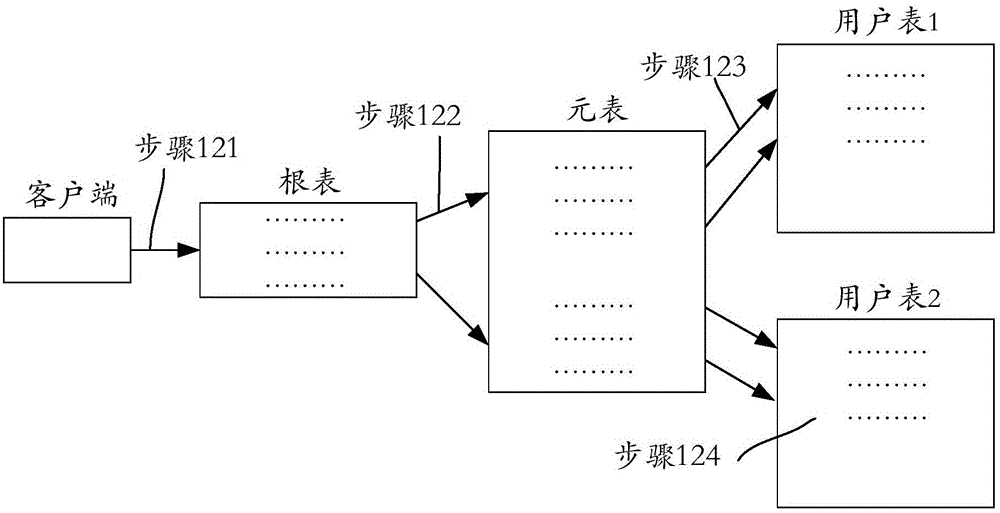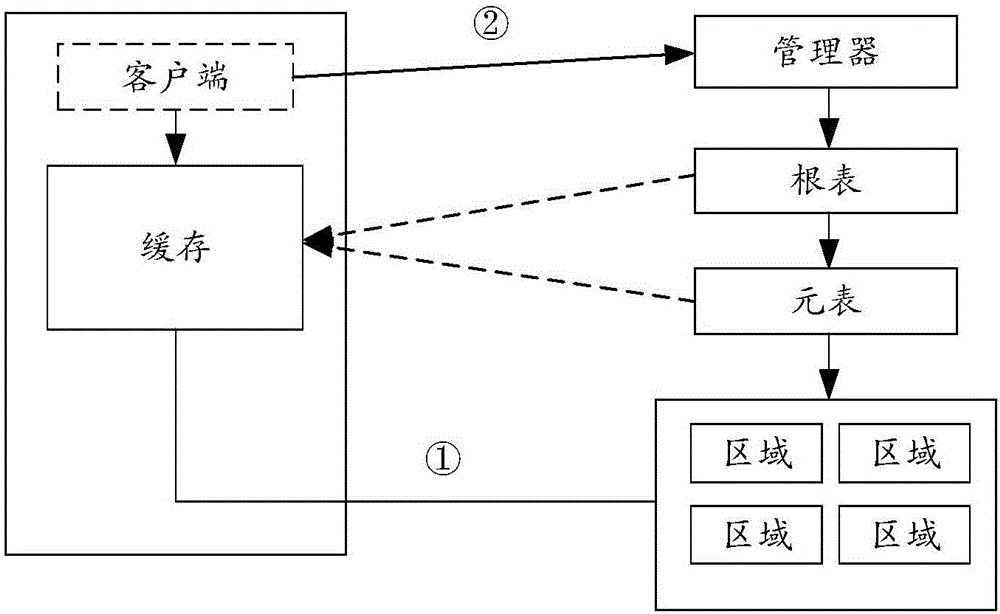Database access method, terminal and server
An access method and database technology, applied in the field of distributed storage, can solve problems such as long time-consuming, high frequency of client trial and error updates, and reduced fast read and write performance
- Summary
- Abstract
- Description
- Claims
- Application Information
AI Technical Summary
Problems solved by technology
Method used
Image
Examples
Embodiment 1
[0055] In order to solve the problems existing in the background technology, an embodiment of the present invention provides a method for accessing a database. The method is applied to a terminal, and the terminal stores a metatable and a root table locally. The functions implemented by the method can be implemented by the processor in the terminal Calling the program code to achieve, of course, the program code can be stored in a computer storage medium, it can be seen that the terminal includes at least a processor and a storage medium.
[0056] Figure 1-4 It is a schematic diagram of the implementation flow of a database access method in the embodiment of the present invention, such as Figure 1-4 As shown, the method includes:
[0057] Step S101, the terminal starts a timer to start timing;
[0058] Here, the timing time of the timer is preset, and the setting of the timing time is related to the averageTime of the server end (possibly the master node). As a preferred e...
Embodiment 2
[0073] Based on the foregoing embodiments, an embodiment of the present invention provides a method for accessing a database, the method is applied to a terminal, and the terminal locally stores a meta table and a root table, figure 2 It is a schematic diagram of the implementation flow of the access method of the database in the second embodiment of the present invention, such as figure 2 As shown, the method includes:
[0074] Step S201, when the information in the metatable changes, the server updates the parameter values in the properties of the metatable;
[0075] Here, besides the parameters in the prior art, the parameters in the metatable attribute also include newly added parameters in the above embodiments, for example, changeCount, changePercent, averageTime, updateFlag and Threshold.
[0076] Here, the server in this embodiment of the present invention may be a master node.
[0077] Step S202, the server judges whether the parameter value satisfies a preset c...
Embodiment 3
[0115] Based on the foregoing embodiments, the embodiment of the present invention provides a database access method, image 3 It is a schematic diagram of the implementation flow of the access method of the third database in the embodiment of the present invention, such as image 3 As shown, the method includes:
[0116] Step S301, the client starts running;
[0117] Here, the client is installed on the terminal, and the terminal runs the client.
[0118] Step S302, start timing;
[0119] Specifically, the timer is started, and the timer starts timing.
[0120] Step S303, during the timing of the timer, it is judged whether the access task is obtained? If yes, enter step S304, otherwise, enter step S310;
[0121] Step S304, read the local cache;
[0122] Here, the local cache is a root table and a metatable;
[0123] Step S305, accessing the target;
[0124] Specifically, search the root table and metatable according to the access task to obtain the target address, an...
PUM
 Login to View More
Login to View More Abstract
Description
Claims
Application Information
 Login to View More
Login to View More - R&D
- Intellectual Property
- Life Sciences
- Materials
- Tech Scout
- Unparalleled Data Quality
- Higher Quality Content
- 60% Fewer Hallucinations
Browse by: Latest US Patents, China's latest patents, Technical Efficacy Thesaurus, Application Domain, Technology Topic, Popular Technical Reports.
© 2025 PatSnap. All rights reserved.Legal|Privacy policy|Modern Slavery Act Transparency Statement|Sitemap|About US| Contact US: help@patsnap.com



